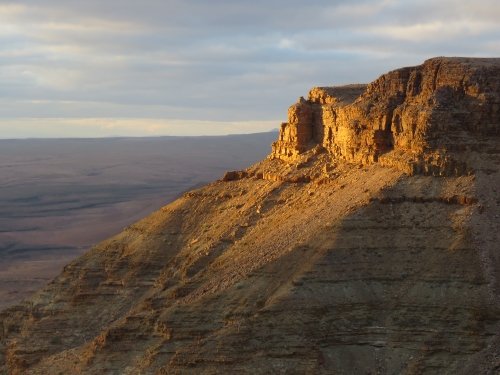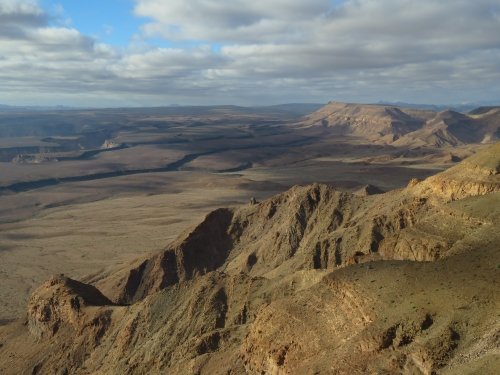Spectacular New Year’s Day visits are starting to become a habit of mine: it was
Virunga
in 2016 (gorillas on New Year’s Eve, chimps the next morning) and the
Rock Islands
of Palau in 2017. On the first of January 2018, I woke up at the edge of Namibia’s
Fish River Canyon
. I had only been sleeping intermittently because of the strong, howling winds blowing through the canyon and along the chalets of the Fish River Lodge which has been built exactly on the rim. From my bed I could see the sun rise above the canyon, constantly changing the illumination of the rocks.

Morning view
This canyon in the far south of Namibia is one of the world’s largest (often advertised as the second largest), although a precise ranking of canyons is as difficult as that of waterfalls. Are we counting length, width, depth or total area? We have 26 different canyons within WHS already inscribed in our
connection
, including Capertee Valley (
Greater Blue Mountains
) which also is said to be the world's second largest canyon after the
Grand Canyon
.
Anyway, the Fish River Canyon is a spectacular natural creation. It actually consists of two canyons, one inside the other. The outer canyon, the first level of terraces, was created when a tectonic rift made a wide gap in the earth’s crust. The Fish river afterwards eroded the second canyon along the valley floor, creating the 270m deep inner canyon. It would have been lovely to do a hike through part of the canyon, but hiking permits are only available outside the summer season because of the scorching heat. See “
The hottest walk on earth
” for an impression. The canyon is already known as a bit of a graveyard anyway, due to reports of lost and dead hikers attempting the 5 day hike through the canyon valley. So I had to make do with a jeep tour along 4 viewpoints.

The two layers of the canyon
It is tempting to compare the Fish River Canyon to the Grand Canyon. Although it is the second most visited site in Namibia, visitor numbers are nowhere as huge as at its US counterpart. There were about 40 people staying overnight in our lodge, which is the only one right at the canyon. And for day trippers there are a couple of viewpoints at the other side of the canyon. There isn’t much that will keep you there for long.
Getting to the Fish River Lodge is an adventure in itself by the way – it takes 108 km / 2 hours of unpaved roads from the main paved road. Another difference is that this area is much more arid. Hardly anything grows at the ridge of the canyon, and even less inside it. The local guide that showed us around told that during the past 8 years, there has been no rain of any importance in this area. Even the iconic quiver trees that need very little are starting to die.

Even dying quiver trees are pretty
I believe the Fish River Canyon wouldn’t be out of place on the World Heritage List. Maybe the Namibian authorities can combine it with another tentative site: the
Succulent Karoo Protected Areas
. The Huns-Ai-Ais Park at the start of the canyon contains high populations of endemic succulent flora and is considered the most biologically diverse arid area in the world. The giant quiver trees, euphorbias and the aloe ramosissima are floral species that you will not easily find anywhere else.



